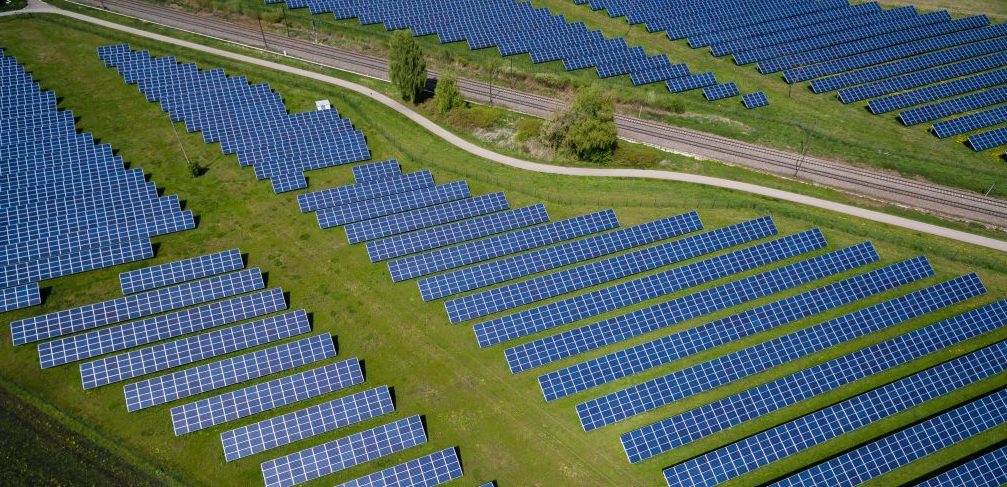Texas has paths to reach net zero by 2050: report

AUSTIN—Texas could achieve net-zero emissions by 2050 via several different routes, according to an analysis — and each of those could boost the state’s gross domestic product.
The report, released by the University of Texas in April, traces four different pathways toward net-zero emissions, or the point at which atmospheric greenhouse levels do not change. In a net-zero Texas, greenhouse gases produced in the state would be captured before they were emitted, or retroactively removed from the atmosphere.
In two of the pathways, Texas rapidly electrifies its power grid and economy. In the third, the Texas economy shifts to run on a mix of electricity and hydrogen produced through electrolysis. In the final scenario, the state relies largely on carbon capture and storage to reach net zero.
Each of those pathways could raise the state’s gross domestic product compared to a business-as-usual scenario, the researchers found.
“The thing I'm surprised at is how uniformly good the decarbonization pathways were,” said Michael Webber, a professor of energy resources and mechanical engineering at the University of Texas, Austin, and one of the authors of the study, to E&E News. “All of them are economy growers, and all of them are job creators.”
The greatest boost to Texas’ GDP was in the hydrogen scenario, the authors said, “primarily due to a growing electrolysis industry that helps offset losses that occur from declining production and consumption of fossil fuels.”
The state’s projected GDP in the year 2050 would be almost 8 percent higher in the hydrogen-intensive scenario compared to the business-as-usual scenario, according to the report.
The extensive carbon capture scenario would produce economic benefits “from maintaining the status quo within the energy industry and investing heavily in" direct air capture and sequestration, the authors said.
In that scenario, the analysis found, the state’s 2050 GDP would be 4.6 percent higher than in the business-as-usual scenario.
The hydrogen and carbon capture-intensive scenarios also created more jobs than either the business-as-usual scenario or the pathways that focused on electrification, according to the report.
Despite their economic benefits, the hydrogen and carbon capture scenarios were more land- and water-intensive compared to the business-as-usual scenario, the authors wrote. Those scenarios also raised electricity demand between now and 2050 by a greater margin than electrification-intensive scenarios.
According to Webber, those compromises were to be expected.
“All of our energy options are about trade-offs,” Webber said. “There's no option that’s perfectly good or bad.”
Webber also said that in designing the models, the team focused on the policy levers that were most realistic for the state’s political landscape.
“We tried to avoid mandates or tax credits for renewables — although we kept the federal ones in — or a carbon fee,” Webber said. “We think those kinds of things are unlikely to happen in Texas, although there might be some federal action.”
The researchers encouraged efficiency standards, "clean-up-your-act" policies to prevent greenhouse gas leaks from industrial equipment and pipelines, and nudges to electric vehicle adoption.
Electric vehicle adoption rates varied in the study depending on the scenario. In the business-as-usual and carbon capture-intensive pathways, electric vehicles would account for half of light-duty vehicle sales, and 5 percent of heavy-duty sales, in 2050.
In the hydrogen-intensive pathway, electric vehicles would account for 90 percent of new light-duty sales by 2035, and hydrogen vehicles would account for 10 percent of new light-duty sales by 2050. All-new heavy-duty vehicles would be hydrogen-powered by 2050.
In the two electrification pathways, all new light-duty vehicles sold would be electric by 2035, and all-new heavy-duty vehicles would be electric by 2050.
The researchers assumed that fossil fuel consumption and production would fall between now and 2050, and called for “proactive steps to facilitate a smooth transition for the oil & gas workforce.”
The growth of infrastructure for electrolysis, carbon removal, and renewable energy could help the state’s oil and gas sector “transition from a ‘hydrocarbon’ identity to a ‘hydrogen and carbon’ identity,” they said.
Oil and gas exports remained constant in both the business-as-usual and net-zero scenarios. But the researchers wrote that exports could fall if the state’s customers accelerate their own decarbonization efforts.
Within Texas, natural gas had a role to play in almost all of the scenarios, the study said.
Wind power was expected to generate about half of all electricity in the state in 2050 in the business-as-usual scenario and up to 90 percent in other scenarios. But the study said that natural gas could be “a complement to high levels of renewables on the grid.”
Ed Hirs, an energy fellow at the University of Houston who did not contribute to the report, called the study “an extremely complex undertaking.”
Hirs noted that the researchers built their analysis on an input-output model, which he called “notoriously difficult to use over time, and bad for including the cost of capital.”
But the model “is useful in that it gives us a framework for discussing potential impacts,” Hirs added.
Yael Glazer, an energy researcher at the University of Texas, Austin, and one of the authors of the study, acknowledged a degree of uncertainty in the projections. She said they were “not meant to be predictive or prescriptive.”
“There could be disruptive technologies that come around that we aren't thinking about that could change things,” Glazer said, “or policies that could come out that could change things.”
The report was funded and supported by the Cynthia and George Mitchell Foundation, the Energy Foundation, The Meadows Foundation, and Catena Foundation. The authors are from the University of Texas at Austin, Colorado-based Vibrant Clean Energy, and the University of Colorado, Boulder.

NEWS
Hide Full Index
Show Full Index
View All News